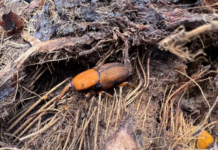By Oscar Nkala
The International Centre of Insect Physiology and Ecology (ICIPE) says recent field experiments in East Africa have proved that inter-cropping maize with drought-resistant green-leaf desmodium and Brachiaria grass on the edges of the farm can help curb the spread of the fall armyworm (FAW).
In a statement, ICIPE said that the “push-pull” cropping model also helped promote soil fertility and hindered the growth of the striga weed, which attaches itself to the roots of cereal crops. In conjunction with British research institution Rothamsted Research, ICIPE scientists confirmed the outcome after experimenting in 250 maize farms in Uganda, Kenya and Tanzania.
According to the centre, the leguminous green-leaf desmodium proved to be a repellent plant that emits a blend of compounds that push armyworms away from the maize crop, while the Brachiaria Mulato II grass on the farm edge produces chemicals that attract the pests.
“Data on the number of fall armyworm larvae on maize, percentage of maize plants damaged by larvae and grain yields was collected. Each farmer had a set of two plots comprising one climate-adapted push–pull division and a maize mono-crop section.
“There was an 82.7% reduction in the number of fall armyworm larvae per plant and 86.7% drop in plant damage per plot with push-pull systems. Grain yields were significantly higher in the climate adapted systems plots,” ICIPE said.
The push-pull technology deployed in East Africa was initially developed for the control of cereal stem borers and the striga weed. The fall armyworm is a deadly pest of South American origin. It has proved devastating and hard to control since arriving in Africa early in 2016. Nearly all of Sub-Saharan Africa has been affected and the FAW is likely to spread into North Africa this year.








